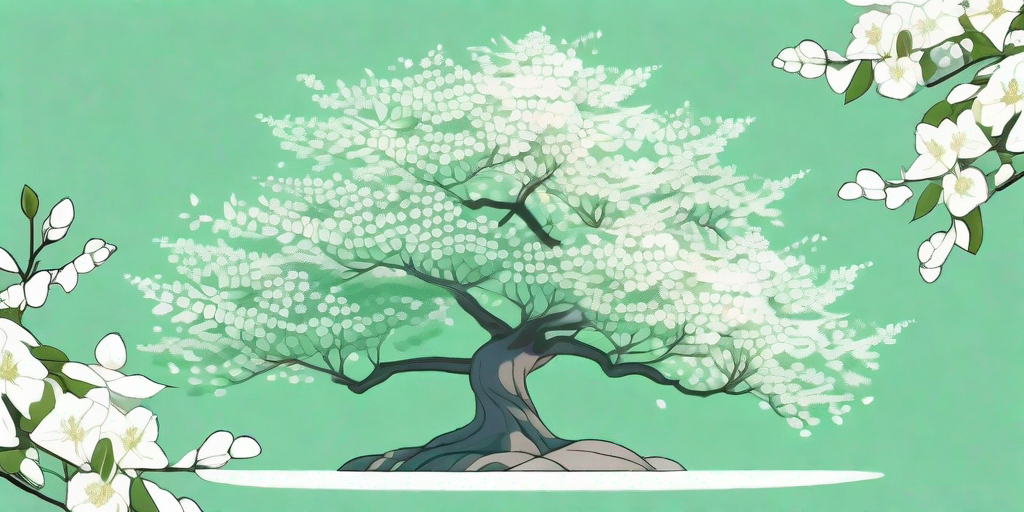
Ah, the Japanese Snowbell Tree, or as the botanists like to call it, Styrax japonicus. This is not just any tree. It's a tree that whispers tranquility, serenity, and all those other Zen words that make you feel like you're sipping green tea in a peaceful Japanese garden. So, if you're ready to bring a slice of Japan into your backyard, buckle up. We're about to embark on a journey of horticultural discovery.
Understanding the Japanese Snowbell Tree
The Origin Story
Every superhero has an origin story, and so does our Japanese Snowbell Tree. Originating from East Asia, specifically China, Japan, and Korea, this tree has been a symbol of elegance and tranquility for centuries. It's like the Superman of ornamental trees, minus the cape and the ability to fly.
With its delicate bell-shaped flowers that dangle from slender branches, it's no wonder that this tree has been a favorite among garden enthusiasts and Zen seekers alike. But don't be fooled by its delicate appearance. This tree is as hardy as they come, able to withstand harsh winters and hot summers. It's like the Chuck Norris of the plant world.
Characteristics
The Japanese Snowbell Tree stands tall, reaching heights between 20 to 30 feet. Its branches spread out in a graceful, horizontal pattern, creating a canopy of green leaves and white flowers. In the spring, the tree is adorned with fragrant, bell-shaped flowers that hang like delicate ornaments. Come fall, the leaves turn a vibrant yellow, making it a standout in any landscape.
But the beauty of this tree isn't just skin-deep. It's also a haven for wildlife. Birds love to nest in its branches, and bees and butterflies are attracted to its fragrant flowers. So, not only will you have a beautiful tree, but you'll also be doing your part in supporting local wildlife. It's a win-win!
How to Grow a Japanese Snowbell Tree
Choosing the Right Location
Location, location, location. It's not just important in real estate. Your Japanese Snowbell Tree needs a spot where it can bask in full sun or partial shade. It's not picky about soil type, but it does prefer well-drained soil. So, if your backyard is more swamp than garden, you might want to reconsider.
Also, remember that this tree likes to spread its branches. So, give it some room to grow. A cramped Japanese Snowbell Tree is an unhappy Japanese Snowbell Tree. And nobody wants an unhappy tree in their garden.
Planting Your Tree
Now, let's get down to the nitty-gritty. Planting your Japanese Snowbell Tree is as easy as pie. Dig a hole twice as wide and just as deep as the root ball. Place your tree in the hole, making sure the top of the root ball is level with the ground. Backfill the hole, tamp down the soil, and water thoroughly. Voila! You've just planted your very own Japanese Snowbell Tree.
But don't rest on your laurels just yet. Your tree will need some TLC during its first year. Water it regularly, especially during dry spells. And don't forget to mulch. Mulch helps retain moisture and keeps those pesky weeds at bay.
Caring for Your Japanese Snowbell Tree
Pruning
Pruning is like giving your tree a haircut. It helps maintain its shape and promotes healthy growth. But don't go Edward Scissorhands on your tree. Prune sparingly, removing only dead or diseased branches. The best time to prune is late winter or early spring, before the tree starts to bud.
And remember, always use sharp pruning shears. Dull shears can damage the tree and make it susceptible to diseases. So, keep those shears sharp. Your tree will thank you for it.
Feeding
Like all living things, your Japanese Snowbell Tree needs to eat. Feed it a balanced, slow-release fertilizer in the spring, before new growth begins. This will give your tree the nutrients it needs to produce those beautiful flowers and lush leaves.
But don't overdo it. Too much fertilizer can harm your tree. It's like eating too much chocolate. It's great in moderation, but too much can give you a stomachache. Or in this case, a sick tree.
Frequently Asked Questions
- Is the Japanese Snowbell Tree invasive?
No, this tree is not considered invasive. It's a well-behaved tree that won't take over your garden.
- Can I grow a Japanese Snowbell Tree in a pot?
Yes, you can! Just make sure the pot is large enough to accommodate the tree's growth.
- How fast does a Japanese Snowbell Tree grow?
With proper care, your tree can grow up to a foot per year. That's pretty fast for a tree!
So, there you have it. Your comprehensive guide to growing and caring for a Japanese Snowbell Tree. Now, go forth and bring some Zen into your garden. Happy planting!















